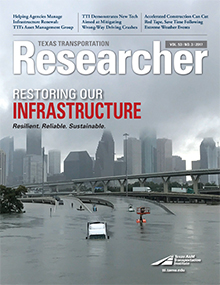Our transportation system will need to change in order to accommodate the dramatic growth in e-commerce, a research project by the Texas A&M Transportation Institute (TTI) reveals.
In numbers that have grown and will likely rise, Americans are going online to buy everything from shoes to avocados — with many of their purchases delivered the same day. As a result, the transportation network is being used in ways not anticipated before.

“With this huge increase in e-commerce, delivery hubs are being moved closer to urban areas, so there’s additional truck- and employee-related traffic. And, in a trend that is just beginning, independent contractors are being hired and using their personal vehicles to make home deliveries,” explains Allan Rutter, head of TTI’s Freight Mobility and Infrastructure Analysis Division. “All of it means an increase in daytime traffic near these hubs, but also in neighborhoods where the items are being delivered.”
The research, conducted by TTI’s Transportation Policy Research Center, encourages legislators, local governments and transportation planners to “keep abreast of rapidly changing trends in retail growth in e-commerce, shorter shipping timelines, and use of express delivery services to replace shopping trips with delivery trips.” The project produced a report with TTI’s research recommendations.
The report highlights the expansion of Texas express delivery services by Walmart and Amazon for typical warehouse items, but also by other industries for grocery, parcel, and meal/restaurant delivery services. Rutter and his coauthors point out that independent contractors using their personal vehicles are not required to register or meet the safety and operational requirements as other motor carriers.
“Policy makers will need to pay close attention to these changes in business patterns and driving patterns, as well as the regulatory differences for these delivery drivers,” Rutter says. “It’s clear that planning and operating our transportation system will have to evolve to meet the needs of consumers.”
